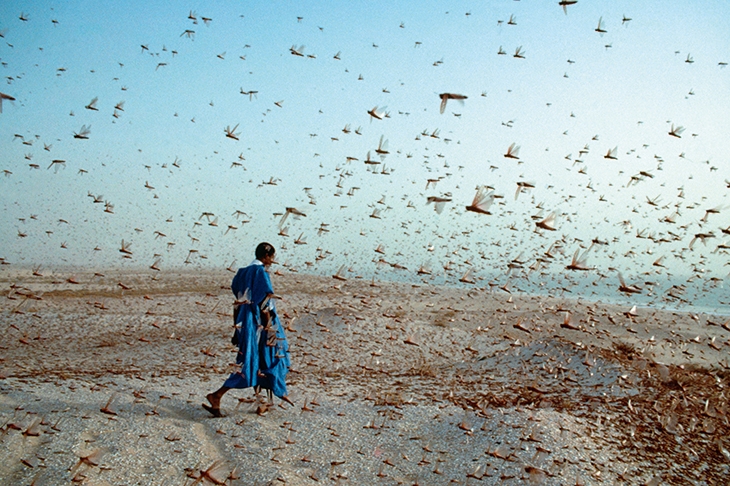Carried on monsoon winds across the Red Sea, vast swarms of desert locusts have posed a deadly threat to the people of the Horn of Africa for millennia. One swarm can number billions of insects, cover a 1,000-square-mile area and consume 30–40,000 tonnes of food per day — all of which makes the desert locust well deserving of its collective noun ‘plague’.
Much brain-power has been dedicated to the controlling of these insects, whose swarms can lead, and have led to, famines. Methods of control have included the digging of trenches to catch hoppers (juvenile locusts) and, later, the aerial spraying of chemical and fungal insecticides. In the early 1950s, however, laying poison-laced bran in the path of marching hoppers was the method most commonly used. Hundreds of staff were employed by the Desert Locust Control, the organisation responsible for controlling locusts across Africa and the Middle East, to orchestrate this effort. Among them was Colin Everard, whose involvement with the DLC’s work in the Horn of Africa and Kenya between 1950 and 1961 is the subject of this book.
One African tribe believes that locusts are good omens of rain and shouldn’t be killed
Everard details the life-cycle of desert locusts: egg pods buried in ‘soft sand or loam’, marching hoppers that ‘eat their own weight in food daily’ and, finally, the fully grown, airborne adults, which can travel ‘200 miles or more in one day’. These devour crops and bring trains to a halt as ‘squelching locusts [nullify] the contact between the wheels and the rails’. Everard’s passages on locusts are interesting, as are those on the technological developments — including the introduction of reconnaissance and pesticide-spraying aircraft that brought the locust problem under control by the early 1960s; however, neither of these topics is the focus of his book.
What takes up most page-space, instead, are descriptions of adventure.








Comments
Join the debate for just £1 a month
Be part of the conversation with other Spectator readers by getting your first three months for £3.
UNLOCK ACCESS Just £1 a monthAlready a subscriber? Log in